The Fight That Haunted Wyatt Earp
Anyone familiar with American popular culture has heard the name Wyatt Earp and fans of the movie Tombstone may believe they know all about the man. But there’s one part of Earp’s biography that has faded from public consciousness, that being his role as a controversial boxing referee. Even those familiar with Earp probably don’t know he refereed professional fights, for he is best-known now as a gunfighter and lawman of the Old West, and countless stories have been penned and motion pictures produced showcasing Earp’s role in the infamous “Gunfight at the OK Corral.” But when he died in 1929 at the age of eighty, Earp was perhaps most remembered not for being a fast draw, but for being a referee who helped fix a major heavyweight fight.

The year was 1896. Then 48, Earp had given up gun fighting, though he had cashed in on his infamy by writing several articles for Hearst publications about his Old West exploits. He also had a reputation as something of a small-scale boxing official, having boxed as a teenager and refereed fights in both America and Mexico, mostly bouts at railroad or buffalo-hunting camps. But out of nowhere he got the chance to oversee a major, high-stakes battle between two of the best in the game.
Fight legends Bob Fitzsimmons and Tom Sharkey were set to throw down at Mechanics’ Pavilion in San Francisco. This was no small-time affair, no buffalo-hunting camp fight, but a big-league showdown that brought with it major attention, just as premiere fights do today. Former champion James “Gentleman Jim” Corbett had recently retired (though he would be back soon enough) and a new top heavyweight was needed to fill the void. Boxing was illegal in San Francisco, but that didn’t matter. Some ten thousand fans filled the arena with everyone who was anyone paying the steep ticket price of ten bucks to see this historic scrap live and in-person. And the man in charge of the action was to be Wyatt Earp.
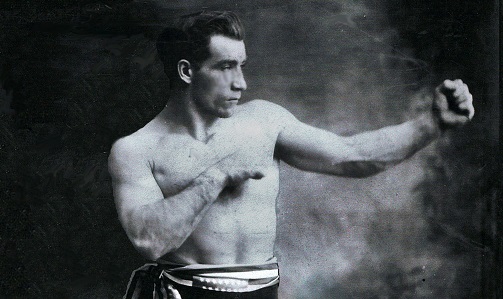
The National Athletic Club, the force behind the event, asked Earp to referee and Wyatt reportedly refused at first. The fight was being promoted as for the heavyweight championship of the world (a controversial proclamation, as boxing was politicized back then, as it is today), and the former lawman feared he might not be up to the challenge due to his limited experience. But such a glittering offer was hard to refuse and so Earp walked into the ring on December 2, 1896 to referee a high profile bout. But not everyone was happy about it.
Controversy erupted even before the opening bell with more than one individual warning Fitzsimmons and his camp that Earp had agreed to throw the fight to Sharkey. This prompted “Ruby’s” manager, Martin Julian, to enter the ring before the start of the contest and, citing all the chatter of a fix, demand that someone replace Earp as referee. At this point Wyatt offered to withdraw but Sharkey’s team insisted that he was the man for the job and they would not back down.
But that wasn’t the only notable pre-fight development. Police captain George Whitman didn’t seem to mind an illegal fight going down in San Francisco, but he did mind the fact that Earp had entered the ring with a revolver bulging from inside his coat. Wyatt calmly handed over his weapon before the match got underway.
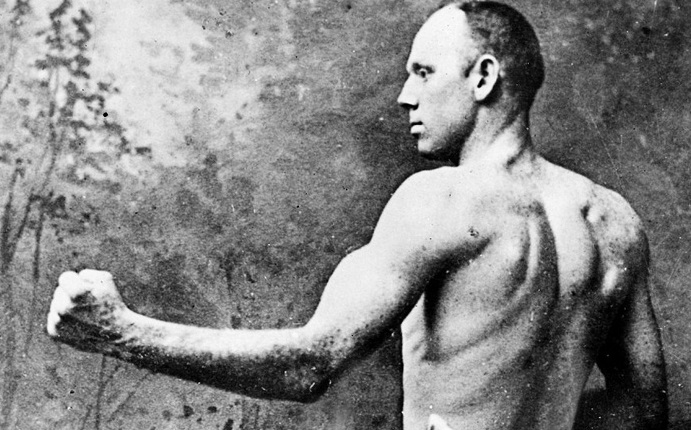
The bout itself was reportedly playing out as many had expected it to, with the shrewd strategy and thunderous power of Fitzsimmons, aka “The Fighting Blacksmith,” getting the better of Sharkey’s aggressiveness and brute strength. A clever tactician and a devastating puncher who had knocked out the esteemed Peter Maher in one round earlier that year, “Ruby” was taking Sharkey to school. But in round eight he threw a body shot which sent Sharkey to the floor. There “Sailor Tom” writhed and held his groin. Sharkey’s team immediately argued their fighter was the victim of a low blow, while Fitzsimmons found the whole affair amusing. That is, until Earp declared Sharkey the winner, via disqualification.
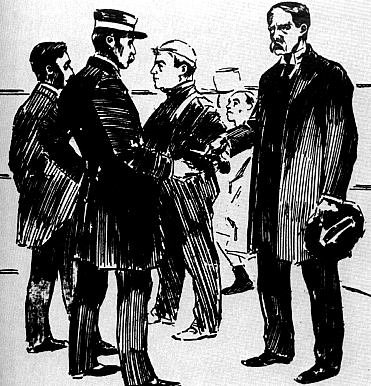
To say the crowd went wild appears to be an understatement. But the thousands at Mechanics’ Pavillion that night were shocked not only by the fight, but by the decision of the referee, Wyatt Earp. Needless to say, it was not an incident that was easily forgotten. The media was all over it, and Earp was smeared as being in on a fix that assured Sharkey was victorious. A New York Herald artist even drew a likeness of Earp that was beyond unflattering, with a cartoon cowboy wearing an over-sized sombrero pointing a gun at Fitzsimmons while handing a bag of cash to Sharkey. Certainly not the stuff of a Hollywood movie.
No one can rightly say whether Earp fixed the fight, made the right call, or was simply an unwitting participant in a world-class scam. The fact that Sharkey wouldn’t be seen by a doctor until the day after the fight only makes things more suspicious. Still, one didn’t necessarily need to pay Earp off in order to take advantage of his services. Again, the man was most certainly not qualified to ref a fight at such a high level. What’s more, there’s the inconvenient fact that Earp had offered to surrender his duties to someone else before the fight ever started.
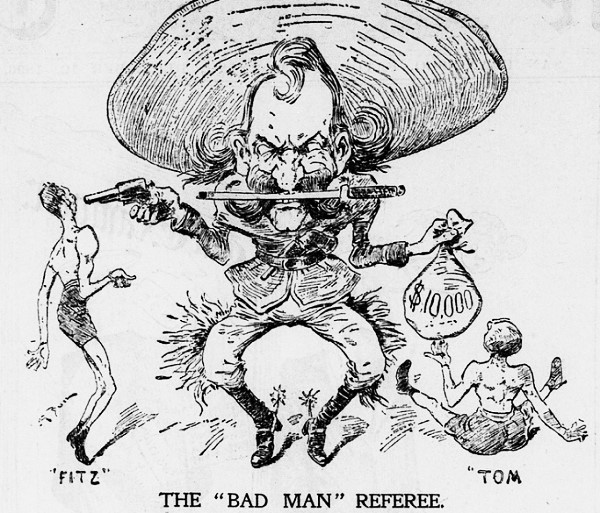
For his part, Earp defended his actions as being totally legit. “I felt I did what was right … and feeling so, I care nothing for the opinion of anybody,” he told The Examiner. “I saw the foul blow struck as plainly as I see you, and that is all there is to it.”
Unfortunately for Earp, the controversy and smears lasted until after his death. It took decades for that chaotic evening to leave the public consciousness and for the image of the towering western figure we know today to emerge, free from the whiff of ring scandal. — Sean Crose

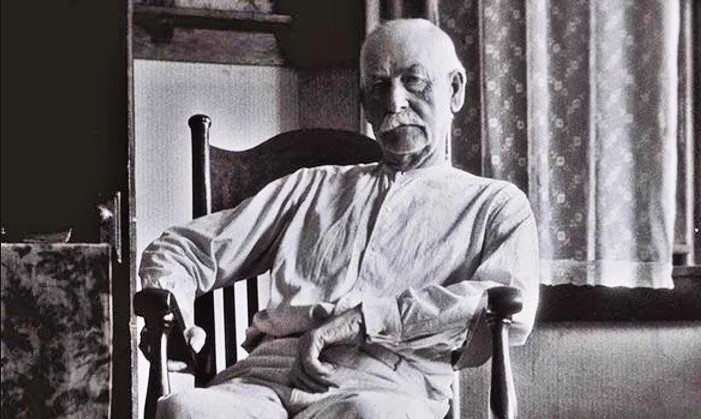

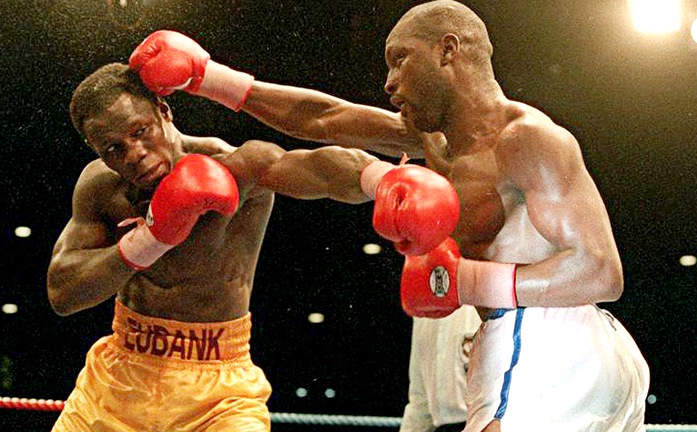
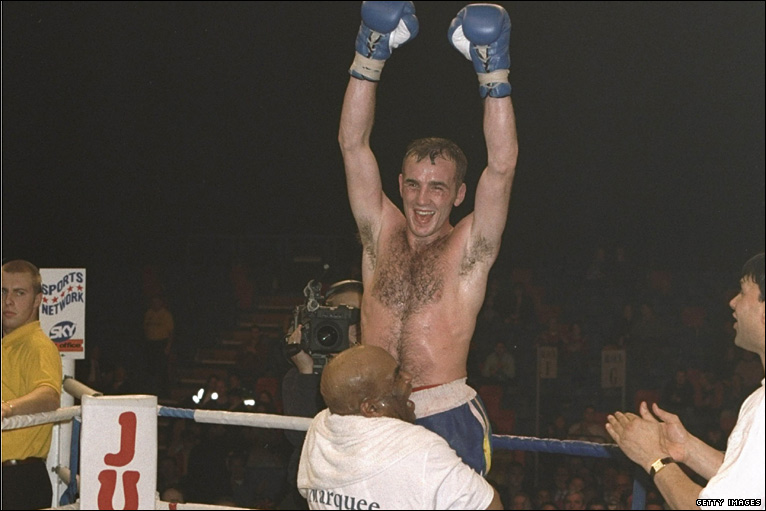
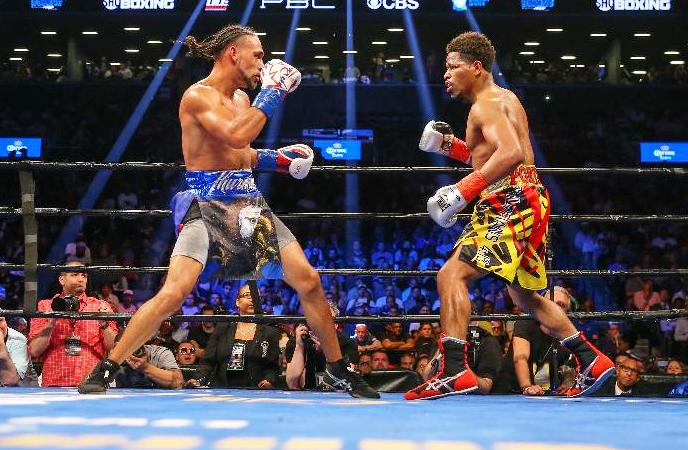
👍